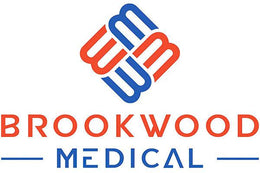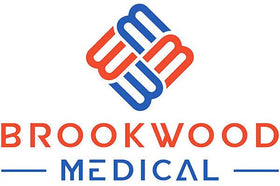Face Masks and Their Influence on Communication

In today's world, face masks have become an essential item for personal safety and public health. From the onset of the pandemic, these coverings have altered the way we engage in everyday communication, introducing both challenges and adaptations to our interactions. As we delve into the influence of face masks on communication, we will also explore the role of accessories like ear protectors for masks that enhance comfort and usability, ensuring that users can maintain effective communication even in the most challenging circumstances.
The Role of Facial Expressions in Communication
Facial expressions play a crucial role in how we convey emotions and intentions. Research suggests that a significant percentage of our communication is non-verbal; thus, the obscuring of our facial expressions through masks can create a barrier to effective interaction. Here are some of the key aspects of communication affected by face masks:
Reduced Visibility of Emotions
When wearing masks, our mouths and noses are obscured, limiting the visibility of smiles, frowns, and other expressions that convey feelings. Consequently, this lack of emotional visibility can lead to misunderstandings and difficulties in interpreting feelings during conversations.
Challenges in Verbal Communication
The muffling effect of masks can make verbal communications harder to hear and understand. This can be especially challenging in noisy environments, where background noise further complicates the exchange. Misunderstandings may increase, necessitating repeated clarifications.
Impact on Interpersonal Connections
Body language, which often accompanies verbal communication, may also be hampered by the necessity of wearing face masks. The synergy between facial expressions and body language is key to building rapport and personal connections; thus, this impact can be profound.
Adapting Communication Styles
Despite the challenges posed by face masks, humans are naturally adaptable. Various strategies have emerged to circumvent the barriers presented by masked communication:
Enhanced Use of Eyes and Eyebrows
When facial expressions are partially hidden by masks, people have begun to communicate more through their eyes and eyebrows. A raised eyebrow or a twinkle in the eye can convey excitement, concern, or humor, highlighting our innate ability to adapt.
Verbal Emphasis and Clarity
As verbal communications may become less clear, individuals have started to place a stronger emphasis on their tone of voice and clarity of speech. Articulating words more distinctly has become essential to ensure understanding in conversations.
Emojis and Digital Communication
Digital communication has also evolved with the rise of masks. With the use of emojis and gifs in texts and social media, people have found new ways to convey emotions and tone that might be lost in face-to-face interactions. This phenomenon highlights our creativity in using available mediums for effective communication.
The Importance of Comfort and Functionality in Mask-wearing
Comfort is a keyword in the discourse surrounding face masks. For effective communication, it’s vital that masks be both functional and comfortable, allowing individuals to focus on the conversation rather than the discomfort of wearing a mask. Here’s where accessories like ear protectors for masks come into play.
What Are Ear Protectors for Masks?
Ear protectors for masks are innovative solutions designed to alleviate the discomfort often caused by prolonged mask-wearing. These accessories can prevent ear strain and provide a more comfortable experience when engaging in conversations, both casual and professional. They are particularly beneficial for individuals who need to wear masks for extended periods.
How Ear Protectors Enhance Communication
By reducing discomfort, ear protectors for masks facilitate better concentration during conversations. When individuals are free from the distraction of a sore ear or a sliding mask, they can engage more fully, leading to clearer communication and fewer misunderstandings. This is crucial in environments such as hospitals, offices, and customer service settings, where effective interactions are key.
Incorporating Clear Communication and Technology
While the act of wearing masks may complicate in-person interactions, technology has offered various solutions to improve communication:
Speech-to-Text Apps
As verbal communication can be hindered by masks, speech-to-text apps can serve as valuable tools for those needing to ensure clarity in communication. These apps convert spoken words into written text, allowing for easy reading and understanding.
Video Conferencing Solutions
With the shift to remote work and online meetings, video conferencing platforms have become a staple. These tools not only eliminate the need for masks but also place a greater emphasis on visual communication, fostering connections without physical barriers.
Sign Language and Augmented Communication Aids
For individuals who rely on sign language, the use of masks poses unique challenges. Filters that minimize the obstruction of facial expressions essential for sign language are being developed, promoting greater inclusivity in communication.
Social Dynamics in Masked Interactions
Beyond the logistical challenges, wearing masks has also altered social dynamics in various settings:
Building Trust
Communicating while masked can impact the level of trust established in professional and personal relationships. The inability to see a person’s full face might lead to insecurities regarding sincerity. Taking the time to engage in eye contact and animated expressions can help build trust even amid masked communication.
Cultural Perceptions
In some cultures, the wearing of face masks might convey respect and caution, while in others, it may be perceived as a barrier. Being aware of cultural differences can inform how we approach communication across demographics and contribute to a deeper understanding of diverse perspectives.
The Future of Communication with Masks
As society continues to adapt to the new normal, the influence of masks on communication will likely evolve as well. Here are a few possibilities to consider:
Hybrid Communication Models
As we integrate both in-person and virtual communication, hybrid models are emerging. This approach may continue to flourish even after the pandemic, allowing individuals to tailor their interactions to their comfort and necessity.
Advancements in Mask Technology
Innovation is expected in mask technology, including masks with transparent panels to enhance visibility of facial expressions or devices that integrate speech-enhancing features. Such advancements may significantly improve communication efficacy in the future.
Reimagining Connection in a Mask-Wearing World
Facing the unique challenges of communication while wearing masks has tested our adaptability and creativity. As we continue this journey, it's important to recognize the role that comfort plays. Accessories such as ear protectors for masks can be pivotal in improving the experience of communication, allowing us to engage effectively, express ourselves fully, and maintain connections even when hidden behind fabric.
While face masks might obscure our smiles, they cannot hide our spirit or our determination to connect with one another. Embracing the changes and finding new ways to communicate can ultimately lead us to stronger relationships and enriched interactions, regardless of the barriers. So, next time you reach for your mask, consider the power of adaptation and remember that communication might just evolve in the most unexpected ways!






